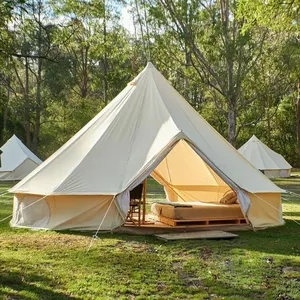Introduction: Embarking on a solo backpacking adventure offers a unique and empowering experience. To fully immerse yourself in the wilderness, you need a reliable and lightweight backpacking tent that can withstand the challenges of rugged terrain and changing weather conditions. In this blog, we’ll delve into the world of solo backpacking tents, exploring the features that make them an essential companion for your solitary outdoor expeditions.
- Ultralight Design: Solo backpacking tents prioritize lightweight materials and minimalist designs to reduce pack weight and increase portability.
- Compact Size: Compact packing is crucial for solo backpackers. Choose a tent that packs down small to save space in your backpack.
- Easy Setup: Quick and hassle-free setup is essential, especially when you’re navigating challenging terrain and changing weather conditions alone.
- Weather Resistance: Backpacking tents should offer excellent weather resistance, including durable rainflies and proper ventilation for comfort.
- Single-Person Size: Opt for tents designed for a single person, offering a snug and cozy shelter while keeping weight to a minimum.
- Durability: Select a tent made from durable materials that can withstand rough terrain, rain, wind, and potential abrasions.
- Freestanding or Non-Freestanding: Choose between freestanding tents for easier setup or non-freestanding tents for reduced weight and versatility in pitching.
Conclusion: Solo backpacking offers solitude, self-reliance, and an intimate connection with nature. By choosing a solo backpacking tent that combines lightweight design, weather resistance, and easy setup, you’ll be well-equipped for memorable solo expeditions into the wilderness.







